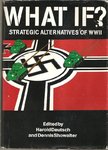drgondog
Major
The Mustang B/C/D had a couple of serious issues - namely vicious high G stall/spin characteristics, more vulnerable to 'golden B-B' with underslung radiator/oil cooler and glycol lines, some structural issues in High G diving roll, and for the B/C gun jamming from both high G stresses as well as marginal gun heater.
It can be a beast in a severe cross wind landing - and do NOT ditch the airplane.
It can be a beast in a severe cross wind landing - and do NOT ditch the airplane.

